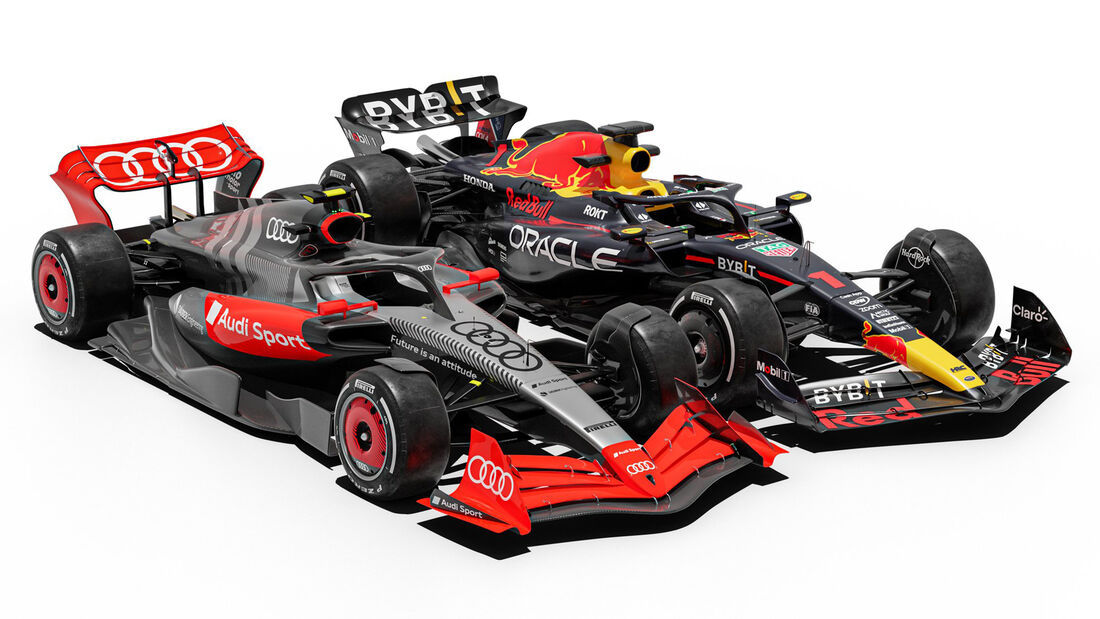The next hybrid era will not take effect until 2026, yet it is already stirring people's minds more powerfully than any previous rules reform. Critics are expressing concerns that Formula 1 is straying too far from its DNA. During races, saving energy will be more important than accelerating. Because 350 kilowatts of energy must be recovered per lap.
The FIA and Formula 1 are trying to prevent exactly that when writing the 2026 regulations. Efficiency must be key. The key to this is cutting weight. Originally, no one could imagine how this would be possible with drive units that would become significantly heavier.
A direct comparison between the 2026 (Audi) and the 2026 (Red Bull) model shows that the wheelbase is shorter and thinner.
Removing the minimum weight is very risky
The majority of the savings should come from reducing the size of cars. It becomes 20cm shorter and 10cm narrower. By directly comparing the 3D models of the planned 2026 car and the 2023 Red Bull car, the difference in dimensions becomes clear. This finally reflects the trend in recent years towards larger cars.
Initially there was talk of a savings target of 20kg, then later 30kg. But FIA Sports Director Nicholas Tombazis gives hardliners hope that more can be achieved: “The goal is to reduce 40 to 50 kilograms.” The current limit is 798 kg.
However, the FIA does not want to completely abolish the minimum weight. “This would lead to endless competition with unforeseen consequences,” Tombazis fears. The Greek also warned the teams: “There will be no more compromises if the tires or any control device become heavier than expected. The minimum weight remains at the value we have set.” Tombazis is convinced: “In 2026, some cars will still be overweight.”
With the new car there is also a change in the new aerodynamic philosophy. The end panels of the front wings and baffles at the bottom of the body force air inward.
Discussion about the impact of DRS
Overall, the FIA's first man expressed satisfaction with the rule-making process: “We're on the right track with the 2026 car. The driving characteristics will be very similar to what we have today. The cars will generally handle like the 2026 car.” “Much better traffic behaviour. This should make overtaking easier. We are also still working on the DRS system.”
Active aerodynamics are intended to be less of an overtaking aid and more of a means of reducing air resistance so that maximum energy can be recovered on the straights. It has not yet been determined how many items will be laid flat in the wind. The front wing and rear wing are safe. The crossbar wing and diffuser edge may also be allowed to move.
This article may contain links to service providers from whom auto motor und sport may receive a commission (so-called “affiliate links”). More information here.

“Tv expert. Hardcore creator. Extreme music fan. Lifelong twitter geek. Certified travel enthusiast. Baconaholic. Pop culture nerd. Reader. Freelance student.”






More Stories
“In a really good position”
Things are boiling behind the scenes at OpenAI – News
OE-LPL: Austrian Airlines' Dreamliner takes off on its first long-haul flight